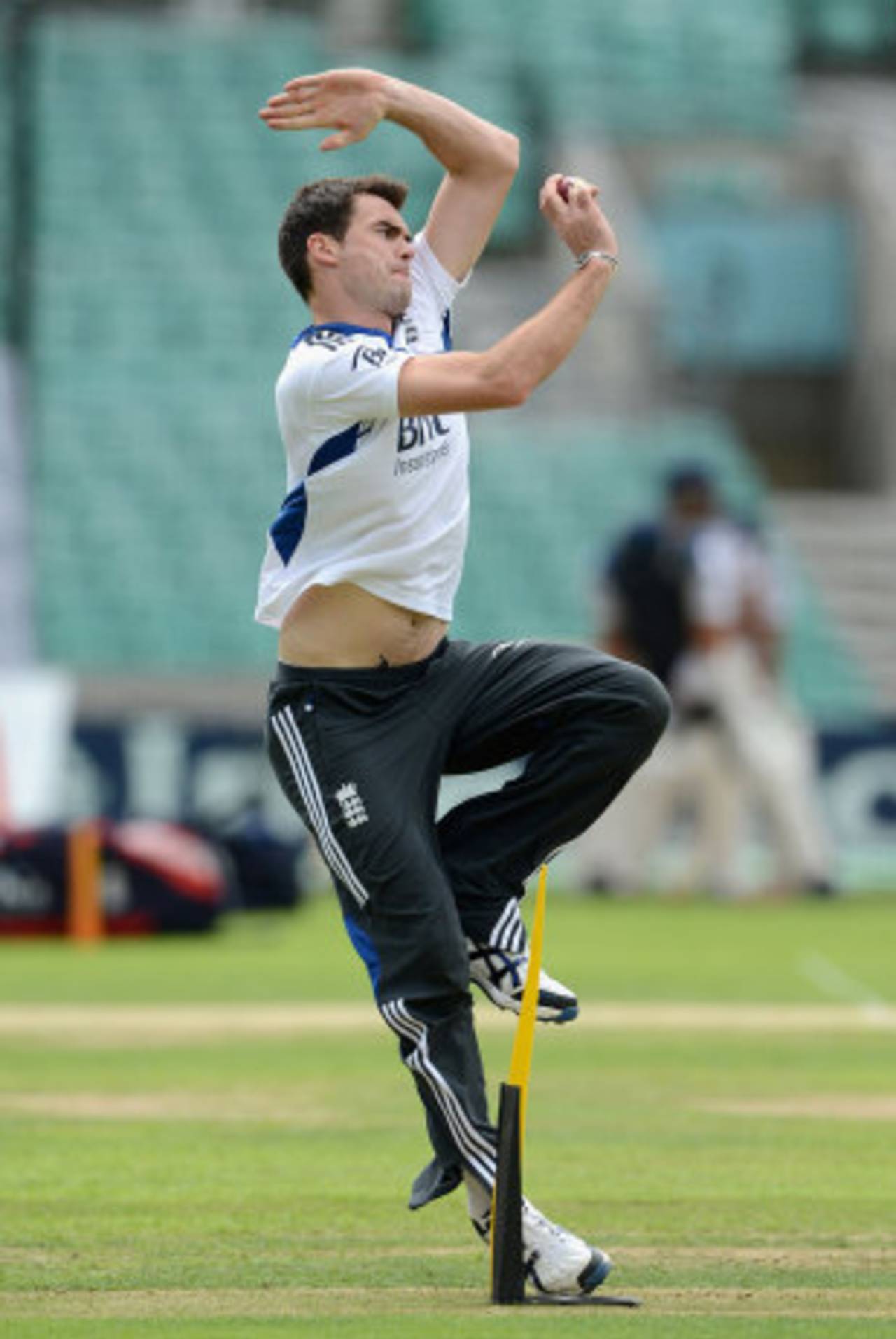Reverse psychology
Playing reverse swing is as much of an art as any other in cricket
Aakash Chopra
10-Dec-2012

On this tour James Anderson was able to exploit batsmen's tendency to always play inside the line for reverse swing by using decoy indippers • Getty Images
Quashing all the many "educated guesses", Eden Gardens has sprung a surprise for many of us who believed it would help the spinners during the third Test. Instead, fast bowler James Anderson proved to be the giant-killer with his persuasive reverse swing.
Conventional wisdom has it that the inswinger is the most lethal delivery when the ball is reversing, and that bowled and lbw are the two most common modes of dismissal in these circumstances, especially for right-hand batsmen. When the old ball starts reversing, the toughest delivery to play is the one that tails back into the right-hander, for nothing in the flight of the ball (except the shine, if you see it) suggests that the ball will dart back in at the last moment.
If one half of the ball is extremely rough and the other is shiny, even a trundler can generate reverse swing, but it won't be half as effective as what a genuinely quick bowler would produce. The slower the pace, the earlier the ball swings in the air; and the later the movement in the air, the tougher it is to handle.
To delay swing, all good bowlers bowl an inswinger as they would an outswinger, and vice versa. This basically means that the bowler will use the same seam position, wrist position and overall action as he would for an outswinger. In fact, he will also bowl it as an outswinger, pushing the ball towards the off side. Only when it loses a bit of pace (and the quicker you bowl, the later it loses pace), does it tail back in. The likes of Waqar Younis and Wasim Akram mastered this art.
Bowlers with slightly lower bowling arms create more problems than the ones who bowl with a high-arm action. That also explains why Anderson was more effective than Steven Finn in Kolkata, or why the likes of Lasith Malinga and Waqar have been more dangerous than Glenn McGrath, Javagal Srinath and so on.
The first and most trustworthy giveaway while countering reverse swing is to look for the shiny side of the ball. This isn't always a completely accurate indicator because every now and then the ball will misbehave, but when it starts reverse-swinging, it by and large always moves towards the shiny side. So if you manage to see the shine, you can generally set yourself up a fraction in advance. This means opening the stance up a bit if the shine is facing midwicket (for a right-hander), and issuing yourself a mental warning not to fish outside off if the shine is facing covers. It isn't always possible to spot the shiny side, though, for good bowlers also master the art of hiding the shine while running in. Waqar and Wasim managed to hide it till the very last moment, which made them even more lethal.
The ball comes back in a lot more than it goes away when it's reversing, so most batsmen try to play inside the line at all times. While that takes care of the balls coming in, it leaves you vulnerable to those that hold their line or go away
Since you don't have much of a clue about the ball's final destination, it's important to resist the temptation to play the lines, and instead to delay your movement till the last instant. This means that even when the ball is outside the off stump in its flight, you're best off not taking the front foot too far across - once you've committed to the shot, it will be impossible to bring the foot back in if the ball dips back at the last moment.
For some reason, the ball comes back in a lot more than it goes away when it's reversing, so most batsmen try to play inside the line at all times. While that takes care of the balls coming in, it leaves you vulnerable to those that hold their line or go away fractionally. That's what Anderson exploited on day one in Kolkata - he used the indippers almost as decoys to induce outside edges with the balls that held their line. Both Virat Kohli and Sachin Tendulkar were the victims of the same strategy.
Another way to deal with reverse swing is to shorten your backlift considerably: the higher the backlift, the tougher it is to dig yorkers out. Tendulkar appreciably diminished his backlift against Anderson on day one. However, while this helps keep the toe-crushers out, it adversely affects shot-making ability because of the lack of momentum.
While a short forward stride is recommended while countering reverse swing, it's important to not mistake it with not moving the feet at all. In order to counter any kind of lateral movement, be it off the pitch or in the air, it's imperative to use the feet decisively to get into the right positions.
Just like getting the ball to reverse-swing effectively is a craft, playing it efficiently is one too - one that calls for a lot of skill and a slice of luck.
Former India opener Aakash Chopra is the author of Out of the Blue, an account of Rajasthan's 2010-11 Ranji Trophy victory. His website is here and his Twitter feed here